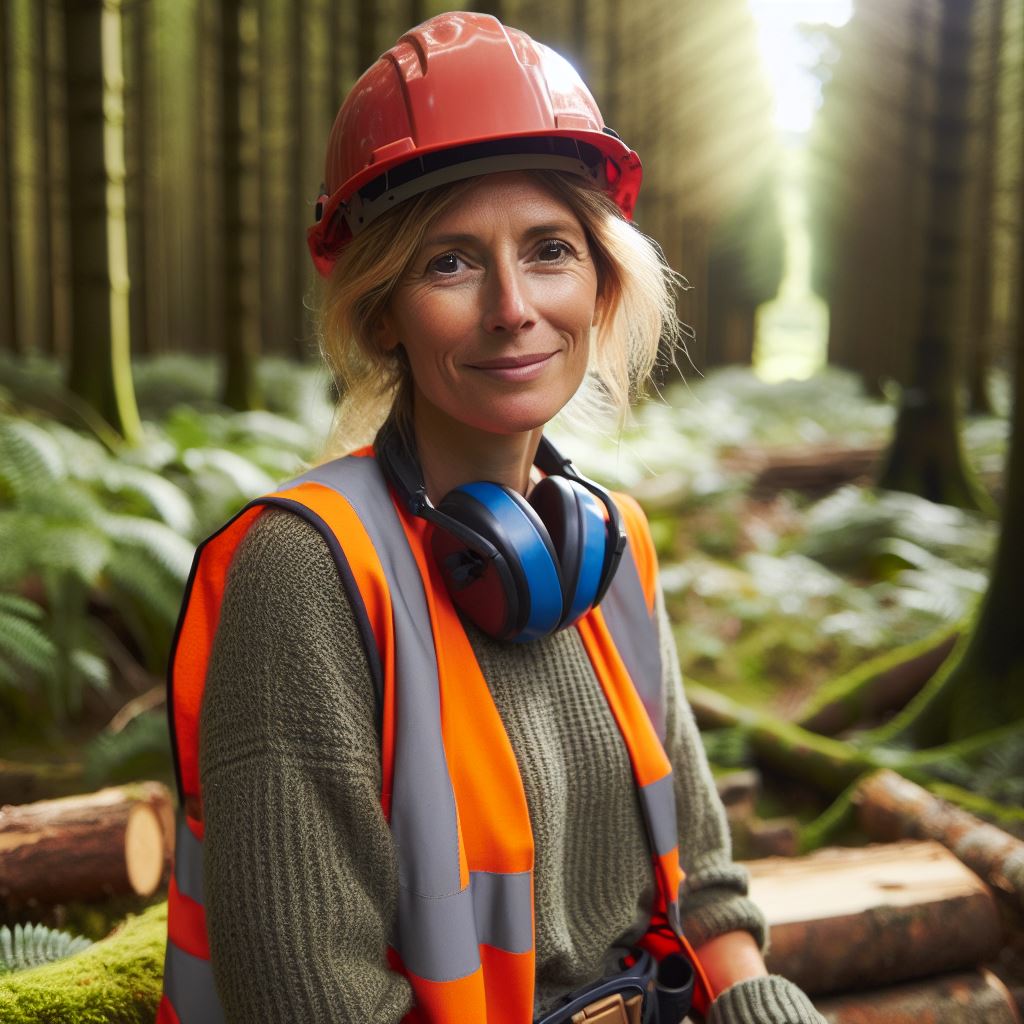Introduction
Sustainable forestry in the UK ensures long-term environmental and economic benefits. This blog post aims to explore case studies demonstrating successful sustainable forestry management practices.
Sustainable forestry is crucial for maintaining biodiversity, supporting rural economies, and mitigating climate change.
By examining case studies, we can gain insights into effective strategies and methods employed in sustainable forestry.
Case study 1
The first case study focuses on Woodland Trust’s approach to sustainable forestry. They prioritize biodiversity conservation through rewilding, tree planting, and responsible timber harvesting.
Case study 2
The second case study delves into Forest Stewardship Council (FSC) certification and its impact on sustainable forestry. FSC promotes responsible forest management and ensures ethical sourcing of timber products.
Case study 3
The final case study explores the collaboration between forestry companies and local communities in sustainable forest management.
This partnership facilitates socio-economic development while safeguarding forest resources.
The case studies discussed emphasize the importance of sustainable forestry in the UK. These practices promote ecological resilience, economic growth, and community engagement.
By implementing responsible forest management strategies, we can ensure the preservation of forests for future generations.
Read: UK Crop Farming: Trends and Techniques
The National Forest
The UK’s National Forest spans counties, aiming for biodiversity, recreation, and economic growth.
Sustainable forestry practices, like selective planting, preserve habitats, sequester carbon, and boost soil quality. It’s revived wildlife and brought jobs, tourism, and better facilities to communities.
Challenges in funding and land were overcome through partnerships and government support.
Over 9 million trees planted, 200,000 yearly visitors, and 85,000 tonnes of CO2 reduced annually showcase its impact.
Protected species have flourished, and community engagement via education and volunteer programs thrives.
Personalized UK Career Consulting
Receive tailored career guidance designed just for you. Get actionable steps and expert support to boost your career in 1-3 days. Take control of your career now.
Get StartedRecognized for sustainable land management, the project adapts to changing needs. It’s a model for similar initiatives, emphasizing long-term planning and community involvement.
Integrating conservation, recreation, and economic development, it sets a precedent for well-managed forests, ensuring future generations benefit.
Read: UK Farming Subsidies: Understanding the Basics
You Might Also Like: UK Agricultural Laws: A Manager’s Overview
The Kielder Forest
The Kielder Forest, located in Northumberland, UK, is the largest man-made forest in England. It covers an impressive area of approximately 250 square miles.
Sustainable Forestry Initiatives
1. Planting and Management Techniques
The forest utilizes sustainable planting techniques, including the use of native tree species that are well-suited to the local climate and soil conditions.
2. Forest Certification
The Kielder Forest has been certified by the Forest Stewardship Council (FSC), ensuring that the forest is managed responsibly and meets strict environmental and social standards.
3. Harvesting and Regeneration
Harvest timber selectively to maintain forest ecological balance. Employ proper regeneration techniques for continuous growth of new trees.
Unique Features and Approaches
1. Kielder Water and Forest Park
The forest is home to Kielder Water, the largest man-made lake in northern Europe. The park attracts tourists who can enjoy various recreational activities while learning about sustainable forestry practices.
2. Dark Sky Park
Kielder Forest is designated as an International Dark Sky Park, offering stargazing opportunities and promoting awareness of light pollution reduction.
Economic and Environmental Benefits
1. Timber Production
The forest contributes to the local economy through sustainable timber production, creating job opportunities and supporting the woodworking industry.
2. Carbon Capture
The trees in the Kielder Forest act as a natural carbon sink, offsetting carbon emissions and playing a crucial role in combating climate change.
Partnerships and Collaborations
1. Forestry Commission
The Forestry Commission manages the Kielder Forest and collaborates with local communities, stakeholders, and environmental groups to ensure sustainable practices.
2. Kielder Water & Forest Trust
The Kielder Water & Forest Trust works in partnership with the Forestry Commission, promoting sustainable development and conservation within the forest.
Your Dream Job Starts with a Perfect CV
Get a tailored CV and cover letter that captures your unique strengths and stands out in your industry. Let us help you make an unforgettable first impression.
Get StartedChallenges and Overcoming them
1. Pest Control
The forest faces challenges from pests such as the pine weevil, which can damage young trees. Integrated pest management techniques are employed to mitigate these threats.
2. Local Community Engagement
To overcome conflicts between forestry operations and local communities, the forest management actively involves and educates residents about the benefits of sustainable forestry.
In general, the Kielder Forest exemplifies sustainable forestry practices through its use of native species, forest certification, selective harvesting, and regeneration techniques.
Its unique features, economic benefits, partnerships, and collaborative efforts contribute to its success.
Overcoming challenges such as pest control and community engagement ensures the long-term sustainability of the forest and its environmental and economic advantages.
Read: The Evolution of Fishing in the UK: A Journey

You Might Also Like: Climate Change: UK Fishermen at the Forefront
The New Forest
The New Forest National Park, spanning 566 square kilometers in Hampshire, UK, champions sustainable forestry practices, preserving its ecosystem amidst historical challenges.
Managing tree harvesting and replanting is pivotal, striking a balance between conservation and commercial interests.
Rigorous guidelines protect rare species and habitats while ensuring environmental benefits like carbon absorption, curbing climate change, reducing soil erosion, and enhancing water quality.
This sustainability not only aids the ecosystem but also fosters socio-economic growth.
Local businesses thrive through conservation-driven tourism, while employment flourishes in timber harvesting, forest management, and ecotourism.
The New Forest Trust and the Forestry Commission collaborate with communities and stakeholders, investing in responsible forest management and education.
Future endeavors involve expanding awareness programs and certifying timber products for sustainability.
Optimize Your LinkedIn for Success
Boost your LinkedIn profile with a professional bio, keyword-rich headline, and strategic recommendations that attract recruiters. Stand out from the crowd and get noticed.
Optimize NowOverall, the New Forest epitomizes successful sustainable forestry, preserving its uniqueness while bolstering the economy and battling climate change.
Read: Modern Fishing Gear: UK Fishermen’s Toolkit
Uncover the Details: Arborist Career Paths: UK Opportunities
Conclusion
In the end, the case studies have highlighted the positive impacts of sustainable forestry in the UK.
Through these examples, it is evident that sustainable forestry practices are vital for maintaining the health and biodiversity of forests.
The importance of sustainable forestry should not be underestimated. It provides numerous benefits, including carbon sequestration, habitat preservation, and a sustainable source of timber.
Moreover, it can contribute to the local economy by creating jobs and supporting rural communities.
It is crucial for individuals and organizations to actively support and promote sustainable forestry practices in the UK.
Choose certified sustainable wood, support local initiatives, and raise awareness about responsible forest management for environmental conservation.
By taking action, we can ensure the long-term viability of our forests and protect them for future generations. Efficient forestry practices are not only environmentally beneficial but also economically advantageous.
In closing, sustainable forestry in the UK is essential for preserving our natural resources and maintaining a healthy ecosystem.
Let us all work together to support and promote sustainable forestry practices, ensuring a sustainable future for our forests and the countless benefits they provide.
[E-Book for Sale]
500 Cutting-Edge Tech Startup Ideas for 2024 & 2025: Innovate, Create, Dominate
$19.99 • 500 Tech Startup Ideas • 62 pages
You will get inspired with 500 innovative tech startup ideas for 2024 and 2025, complete with concise descriptions to help you kickstart your entrepreneurial journey in AI, Blockchain, IoT, Fintech, and AR/VR.




